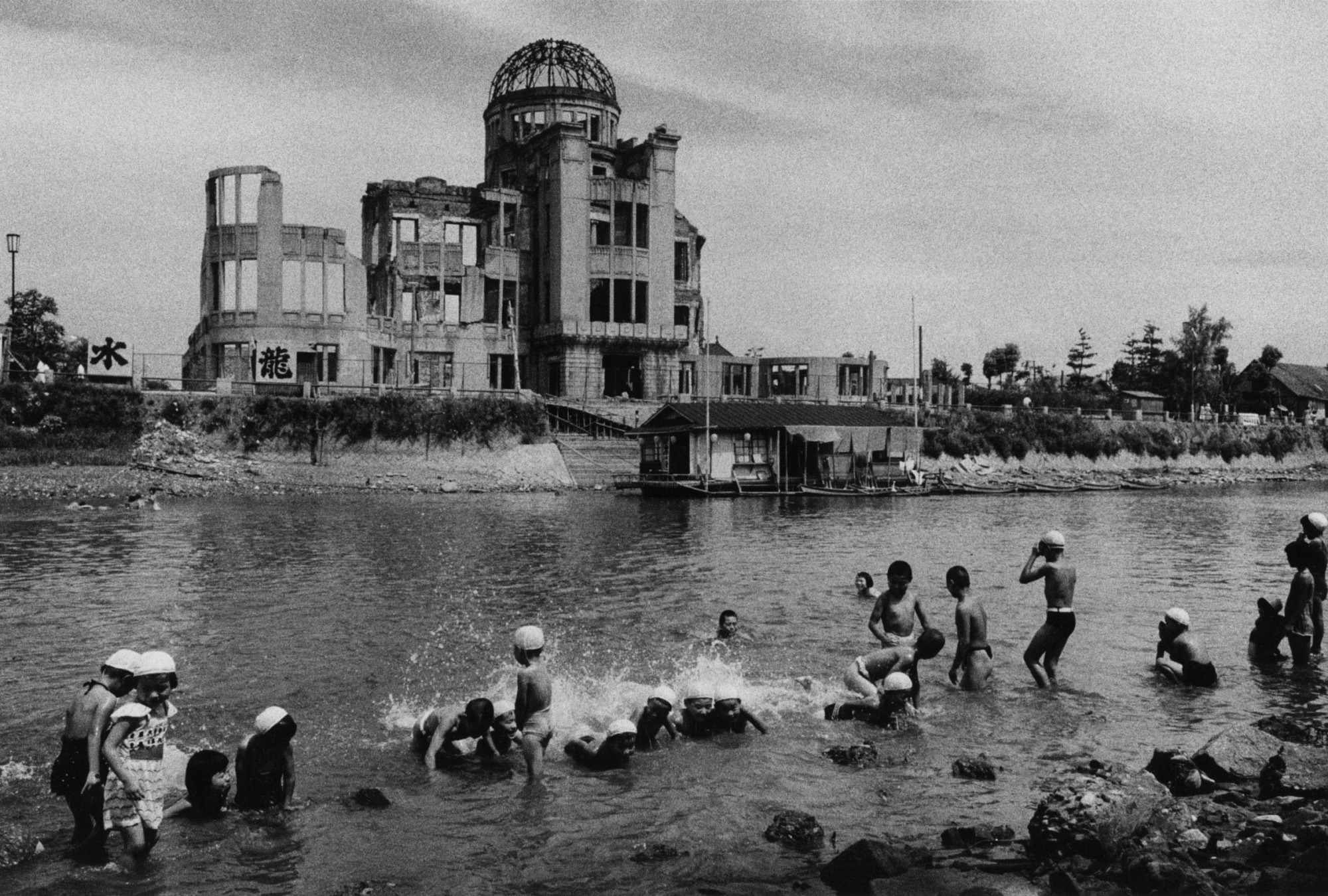By 1957, photographer Ken Domon had reached the peak of his creative powers. A picture taken that year in Hiroshima, which he was visiting for the first time to chronicle the lingering effect of the bomb, shows him supremely confident: ram-rod straight on a stool, tripod in one hand, he casts a sideway glance at the viewer. His brow is lightly furrowed; his lips display a slight pout reminiscent of a kabuki actor adopting a mie pose. What we see is an intense, tenacious and uncompromising mind.
Two years later, Domon suffered the first of three brain hemorrhages that marked the beginning of a long, slow and painful decline. In an image from 1979, on a photo shoot near Nara, he is in a wheelchair, his shoulders slumped, his cheeks a bit hollow. We can still notice a glimmer of passion in his eyes, but his gaze is distant. Not long after that, he was back in the hospital, in the coma in which he remained until his death in 1990.
Domon was a prolific artist who produced almost 70,000 photographs over a career that spanned more than four decades. And yet, much like Japanese photography as a whole, he was until recently almost completely unknown outside his homeland. In fact, the first museum exhibition entirely dedicated to his work was organized only last year, in Rome, and the accompanying catalogue, which will be published in English by Skira in June, is the first full monograph on his life and work to appear in that language. Late in coming, this recognition is long overdue.



















With your current subscription plan you can comment on stories. However, before writing your first comment, please create a display name in the Profile section of your subscriber account page.